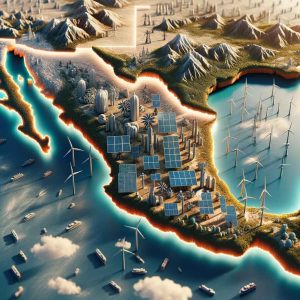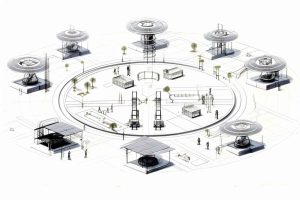Power purchase agreements (PPAs) are a key strategy for businesses and organizations that want to secure reliable and cost-effective electricity supplies in the dynamic world of energy procurement. This guide covers the details of PPAs, helping you to make informed decisions for your energy needs.

Todo sobre
What is a Power Purchase Agreement?
A power purchase agreement (PPA) is a legal document that defines the relationship between an electricity producer (seller) and an electricity consumer (buyer), specifying the terms and conditions for the delivery and payment of electricity over a set period. PPAs provide stability and certainty in a dynamic energy market, enabling buyers to lock in electricity at a fixed rate, protecting them from the swings of market prices.
What are PPAs and How Do They Work?
A power purchase agreement (PPA) is a legal contract that binds an electricity producer (seller) and an electricity consumer (purchaser) to a set of terms and conditions for the delivery and payment of electricity over a specified time frame. PPAs are common in the energy industry, as they offer certainty and security in a dynamic and unpredictable market.
The Origins and Development of Power Purchase Agreements
PPAs have been around for a long time, adapting to changes in technology and market design. In the past, PPAs were mainly between utilities and large industrial customers, but the emergence of independent power producers (IPPs) and renewable energy sources has broadened the range and diversity of PPAs.
Benefits of Power Purchase Agreements
PPAs are beneficial for both electricity buyers and sellers. For buyers, PPAs:
- Ensure Price Predictability: PPAs fix the electricity prices for a certain period, shielding buyers from the volatile fluctuations in market prices.
- Improve Energy Reliability: PPAs guarantee a dependable supply of electricity, minimizing the risk of interruptions and ensuring a continuous flow of power for operations.
- Support Sustainability: PPAs can be designed to incentivize the purchase of renewable energy, enhancing sustainable practices and reducing environmental impact.
For sellers, PPAs:
- Provide Long-term Income: PPAs offer a steady stream of income for electricity producers, allowing them to plan for future investments and growth.
- Appeal to Investors: PPAs can appeal to investors by showing the stability and profitability of renewable energy projects.
- Contribute to Grid Stability: PPAs can help stabilize the grid by providing a consistent supply of electricity from renewable sources.
Companies that Trust us:
How PPAs Benefit Both Sides of the Electricity Market
PPAs are contracts that enable both electricity producers and consumers to enjoy various economic advantages:
For Producers:
- Stable and Predictable Income: PPAs ensure a consistent revenue stream for electricity producers, allowing them to plan ahead for future expansion and development.
- Lower Financial Exposure: PPAs reduce the uncertainty associated with volatile market prices, guaranteeing a fixed income stream for producers.
- Improved Project Feasibility: PPAs can help secure investors and funding for renewable energy projects, making them more financially feasible.
For Consumers:
- Fixed Electricity Prices: PPAs set electricity prices for a certain period, shielding buyers from unforeseen market changes.
- Potential Cost Reduction: PPAs can result in lower electricity bills compared to conventional utility contracts.
- Increased Energy Reliability: PPAs ensure a dependable supply of electricity, minimizing the risk of interruptions and ensuring a smooth flow of power for operations.
PPAs and Their Environmental Benefits
PPAs are agreements that have a positive impact on the environment in several ways:
- Encouraging Renewable Energy Use: PPAs can be designed to incentivize the purchase of renewable energy, supporting sustainable practices and lowering environmental impact.
- Cutting Down Greenhouse Gas Emissions: By encouraging renewable energy, PPAs help to cut down greenhouse gas emissions, fighting climate change.
- Aligning with Sustainability Goals: PPAs match the sustainability goals of businesses and organizations, showing their dedication to environmental stewardship.
To sum up, PPAs are versatile agreements that provide economic and environmental advantages for both electricity producers and consumers. By learning the principles, history, and benefits of PPAs, businesses and organizations can make smart decisions about energy procurement and contribute to a more sustainable energy future.
Key Components of Power Purchase Agreements
A PPA is a contract that specifies the key aspects of the electricity sale between the producer and the consumer. These aspects include:
- Price: The fixed rate for the electricity that is sold, usually set for the whole contract period.
- Term: The duration of the PPA, which can vary from a few years to several decades, depending on the preferences of both parties.
- Volume: The amount of electricity to be bought over the contract period.
- Delivery: The way that the electricity will be delivered to the consumer, either through direct transmission or through the grid.
- Payment Terms: The frequency and mode of payment, often involving monthly or quarterly installments.

Contractual Terms and Conditions in PPAs
PPAs, or power purchase agreements, are legal contracts that set the rules for buying and selling electricity for a certain time. PPAs are very important in the energy sector, because they help to keep the prices and supply stable in a changing market. But PPAs can also be very complicated and hard to understand. That’s why we need to look at the main terms and conditions in PPAs.
What are the Key Terms in PPAs?
- Parties: This is where you name the seller and buyer of electricity, and make sure they have legal authority.
- Electricity Specifications: This is where you describe how much, how good, and what kind of electricity you are selling.
- Price and Payment Terms: This is where you state how much you charge per unit of electricity and when you get paid.
- Delivery: This is where you explain how you deliver the electricity, either directly or through the grid.
- Term and Termination: This is where you say how long the PPA lasts and under what circumstances it can end.
- Force Majeure: This is where you list the events that are out of your control that can affect your performance.
- Dispute Resolution: This is where you agree on how to solve any problems that may come up from the PPA.
Pricing Structures in Power Purchase Agreements
One of the key aspects of a PPA is how the electricity price is set for the buyer. There are different types of pricing structures that can be used, such as:
- Fixed Price: The buyer pays the same price for electricity throughout the contract duration, which gives them certainty.
- Indexed Price: The buyer pays a price for electricity that is tied to a reference index, such as a fuel price or market index, which reflects market changes.
- Hybrid Price: The buyer pays a price for electricity that is a mix of fixed and indexed pricing, which offers them a combination of stability and flexibility.
- Escalator Price: The buyer pays a price for electricity that increases at regular intervals to account for inflation or other cost factors.
- Negotiated Price: The buyer and the seller agree on a customized price structure based on specific needs and market conditions.
Types of Power Purchase Agreements
PPAs can be classified into two categories: virtual PPAs, Offsite PPAs and onsite PPAs.
Virtual PPAs: The seller produces electricity and feeds it into the grid, and the buyer gets credits for the electricity that is produced. Virtual PPAs do not need any investment in generation or transmission infrastructure.
Onsite PPAs: The seller installs and operates a generation facility at the buyer’s location. Onsite PPAs offer buyers energy reliability and price predictability but require upfront investment in infrastructure.
Offsite PPAs: involve generating electricity at a facility located away from the buyer’s premises. The electricity is then delivered to the buyer through the grid. This type of PPA requires a lower initial investment compared to onsite PPAs, but it also offers more flexibility in choosing the seller and generation location.

Unlock Mexico’s Energy Market with Our Complete PPA Guide!

Transform Your Energy Solutions with Efficient On-Site and Off-site Power Purchase Agreements in Mexico

Optimize Your Power Spend Try our New Virtual Power Purchase Agreement.

The Evolution and Growth: Offsite PPAs
Onsite Power Purchase Agreements: An In-Depth Guide









